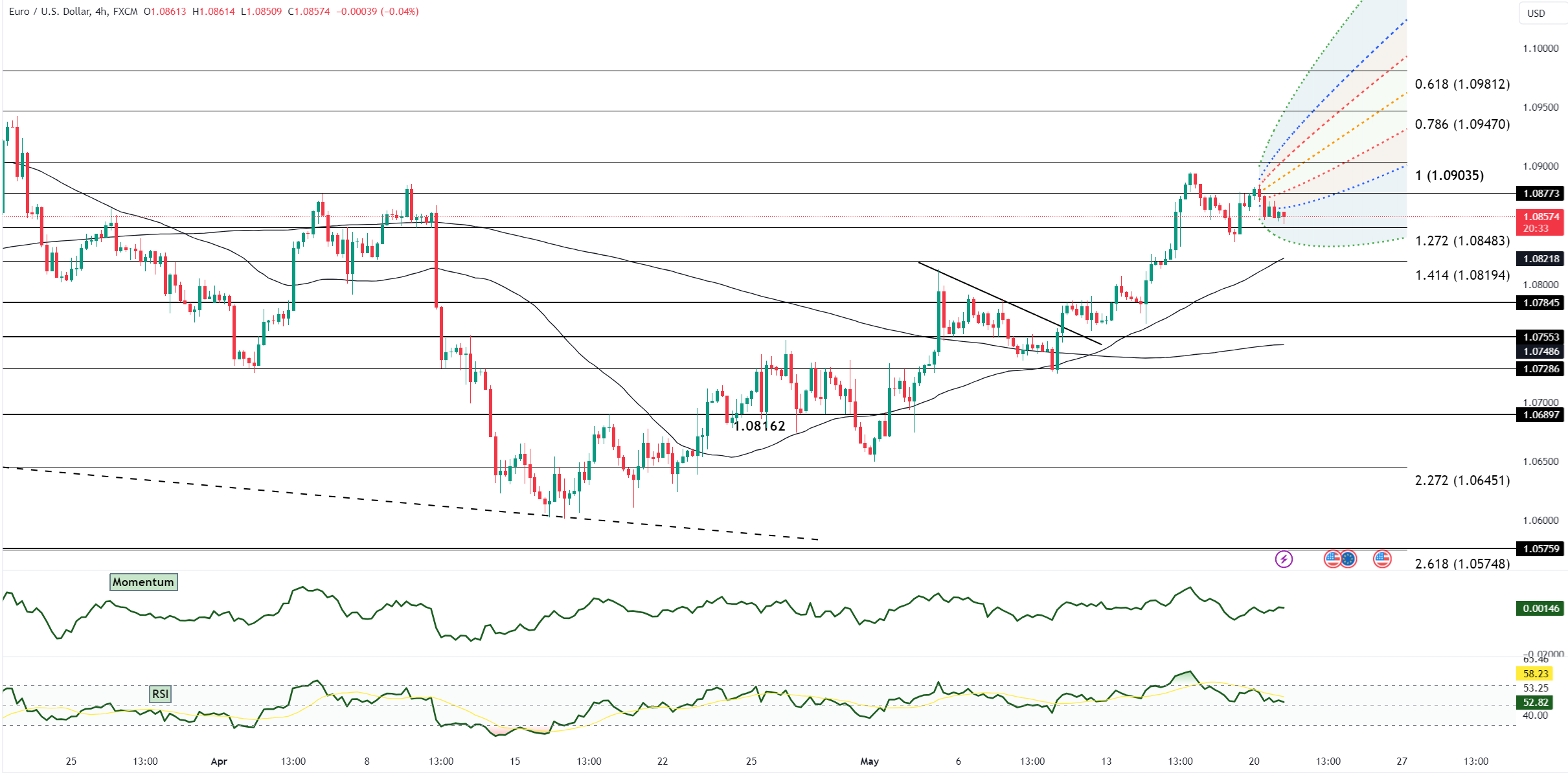EUR/USD Stabilizes Amid Fluctuating Yields and Fed Rhetoric; Consolidation Phase Holds as Markets Eye Central Bank Moves

EUR/USD experienced some volatility in New York trading, opening near 1.0875 after touching an overnight high of 1.08845 . Initially, the pair extended its decline, influenced by a rise in U.S. yields which rallied the dollar. This rise was exacerbated by the USD/CNH pair, which reached 7.2466 on day three, reflecting increased strength in the U.S. dollar against the Chinese yuan. The widening of German-U.S. yield spreads also played a significant role in weighing down the EUR/USD, as higher U.S. yields compared to their German counterparts make the dollar more attractive. Additionally, Federal Reserve rhetoric emphasizing concerns about inflation helped support U.S. yields and underpin the strength of the dollar. Despite these pressures, EUR/USD managed to recover from its lows, lifted by an improvement in risk sentiment. As the day progressed, buying of the U.S. dollar abated, equity markets gained, and gold prices turned positive, helping the EUR/USD approach 1.0870 towards the close of the day. A daily doji candlestick formed, indicative of indecision among traders but maintaining the ongoing consolidation phase. This technical pattern suggests that while immediate directional momentum may be lacking, the underlying market sentiment remains cautious yet balanced.
Looking ahead, the market will be closely monitoring additional comments from Federal Reserve speakers scheduled for Tuesday, which could significantly influence risk sentiment and currency valuations. Any indication of a less hawkish or more dovish stance from the Fed could weaken the dollar further, providing support for EUR/USD. On the macroeconomic front, the differential in monetary policy paths between the ECB and the Fed continues to be a crucial driver. If the ECB signals a slower pace of rate cuts or adopts a more cautious tone regarding economic recovery, it could bolster the euro. Conversely, a more aggressive stance on inflation and interest rates by the Fed could enhance the dollar's appeal. These dynamics are crucial as investors adjust their positions in response to evolving economic indicators and central bank guidance, with potential implications for the broader financial markets and particularly for the EUR/USD exchange rate.

